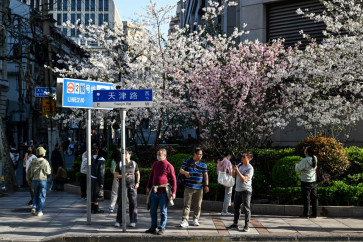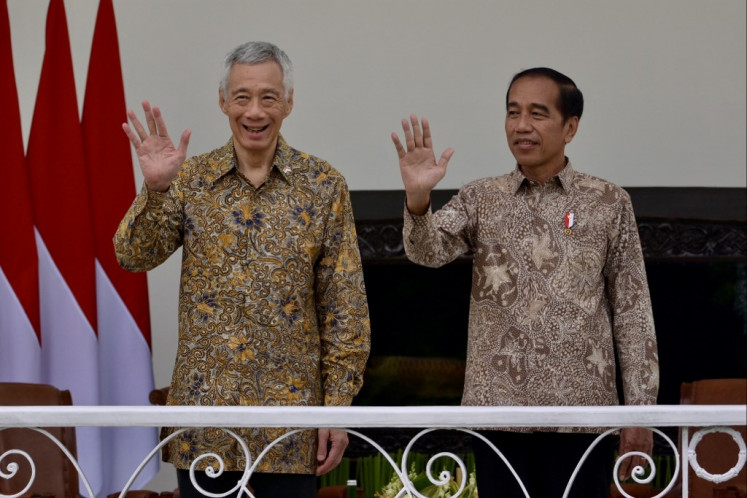PTPN III prepares strategies to reverse poor situation
State-run plantations firm PT Perkebunan Nusantara III (PTPN III) is facing a Herculean task to keep its business afloat after suffering from deep losses since its appointment as a holding company
Change Size

S
tate-run plantations firm PT Perkebunan Nusantara III (PTPN III) is facing a Herculean task to keep its business afloat after suffering from deep losses since its appointment as a holding company.
It became a holding company in October 2014 and now manages 13 state-owned plantation firms.
In the first six months of 2016, it already reported a net loss of Rp 823.43 billion (US$62.14 million) that was deeper than the Rp 529.95 billion net loss it posted last year.
“Our losses were mostly caused by sluggish productivity in our oil palm and rubber plantations,” PTPN III president director Elia Massa Manik said in a briefing in Jakarta on Tuesday.
Elia attributed the sluggish productivity to mature oil palm trees, low commodity prices and mismanagement, especially on rubber plantations.
PTPN III’s plantations are dominated by oil palm trees that cover 57.5 percent of the area, followed by rubber trees that cover 19.53 percent and other plants that take up the remaining parts.
Data from the company show that its production is still below that of private firms.
It produced around 18.2 tons of fresh fruit bunches (FFB) per hectare, lower than the average figure of between 24 tons and 25 tons of FFB per hectare in plantations owned by private companies.
Meanwhile, low productivity is not the only problem the company is dealing with right now. PTPN III is also facing mounting debts and legal disputes that are gnawing into its business.
Total bank loans amounted to Rp 33.24 trillion as of June, while the legal disputes revolve around land claimed by locals.
Elia said that PTPN III’s new management had laid out strategic plans to take to reverse the situation. One measure is to restructure Rp 25 trillion of its debt.
It is also considering making a fresh money injection into a number of its subsidiaries that have been suffering a financial hemorrhage for many years, namely PTPN II, VIII, IX, XI, XIII and XIV.
In a bid to increase productivity, it has allocated Rp 3 trillion to replant about 40 percent of its oil palm plantations — most of which are located within the areas controlled by PTPN II and XIII — that produce low quality fruits.
When completed, the replanted areas are expected to produce an additional 20 tons of FFB.
Its strategic plans also include an attempt to penetrate the downstream palm oil industry by investing Rp 585 billion to build a cooking-oil plant in the Sei Mangkei special economy zone (KEK) in North
Sumatra.
Construction of the facility will commence next month and is expected to last until April 2017. The plant will have an annual production capacity of about 600,000 tons of cooking oil.
Elia said PTPN III was seeking more plots of land for sugarcane plantations, as well, to improve the company’s sugar industry, one of its biggest ventures.
It is currently in talks with the State-Owned Enterprises Ministry so that it can obtain 100 hectares of land from state-owned forestry firm Perhutani.
“We have to improve communications with external parties, such as the SOE Ministry and banks, to make our efforts effectively bear fruit,” Elia said.
The holding company currently has combined assets of Rp 117 trillion, making it one of the largest state-owned enterprises in terms of assets.
Meanwhile, Indonesian Palm Oil Producers Association (Gapki) secretary-general Togar Sitanggang told The Jakarta Post on Wednesday that the palm oil industry was expecting a slight recovery in the remaining months of the year, as the peak of the harvest season in the September to October period would increase productivity.
Bloomberg earlier reported that palm oil shipments from Indonesia, the world’s largest producer, probably rose to the highest level in three months in July after buyers from China to India boosted purchases.
China’s appetite for palm oil is set to recover ahead of its major mid-autumn festival. (mos)
---------------
To receive comprehensive and earlier access to The Jakarta Post print edition, please subscribe to our epaper through iOS' iTunes, Android's Google Play, Blackberry World or Microsoft's Windows Store. Subscription includes free daily editions of The Nation, The Star Malaysia, the Philippine Daily Inquirer and Asia News.
For print subscription, please contact our call center at (+6221) 5360014 or subscription@thejakartapost.com









